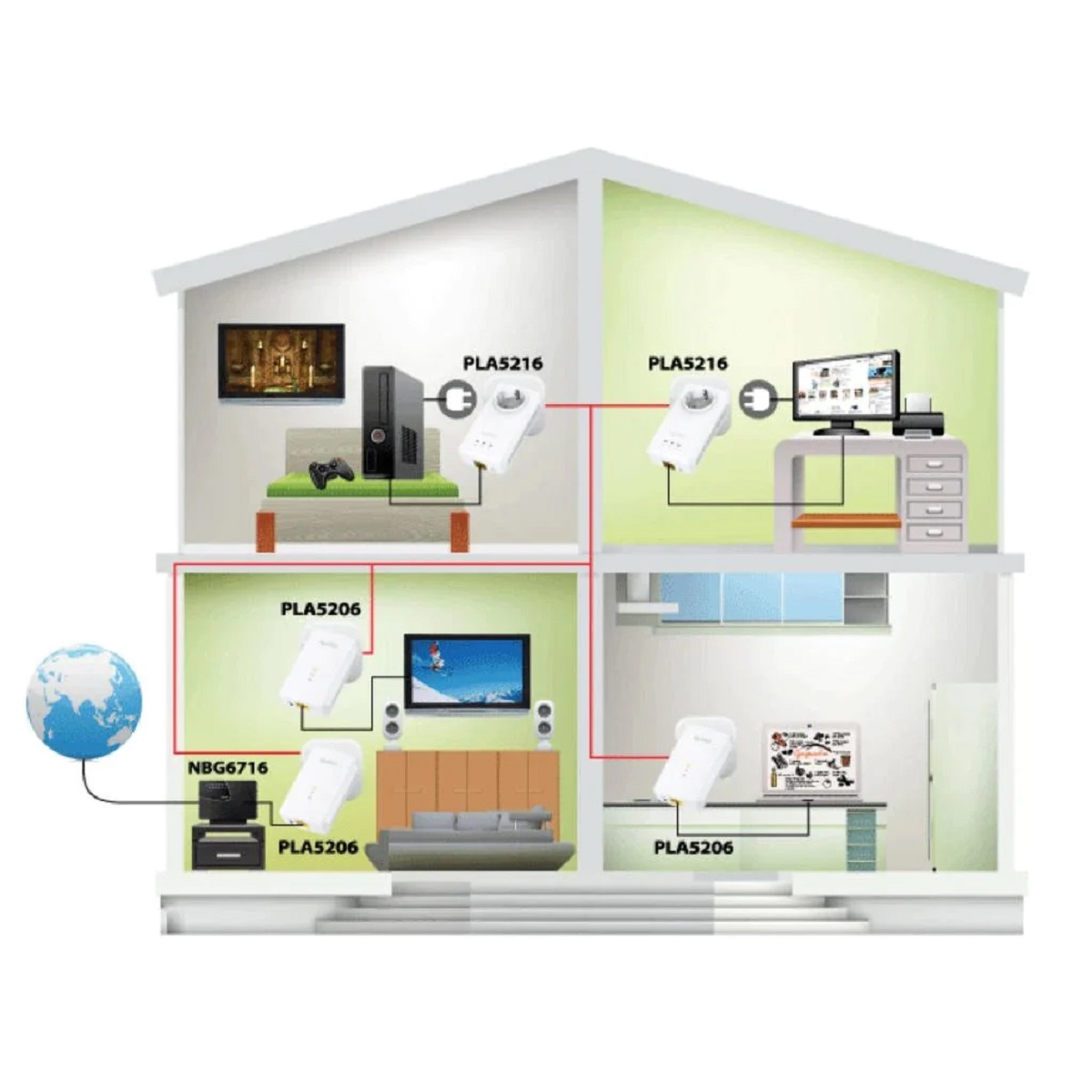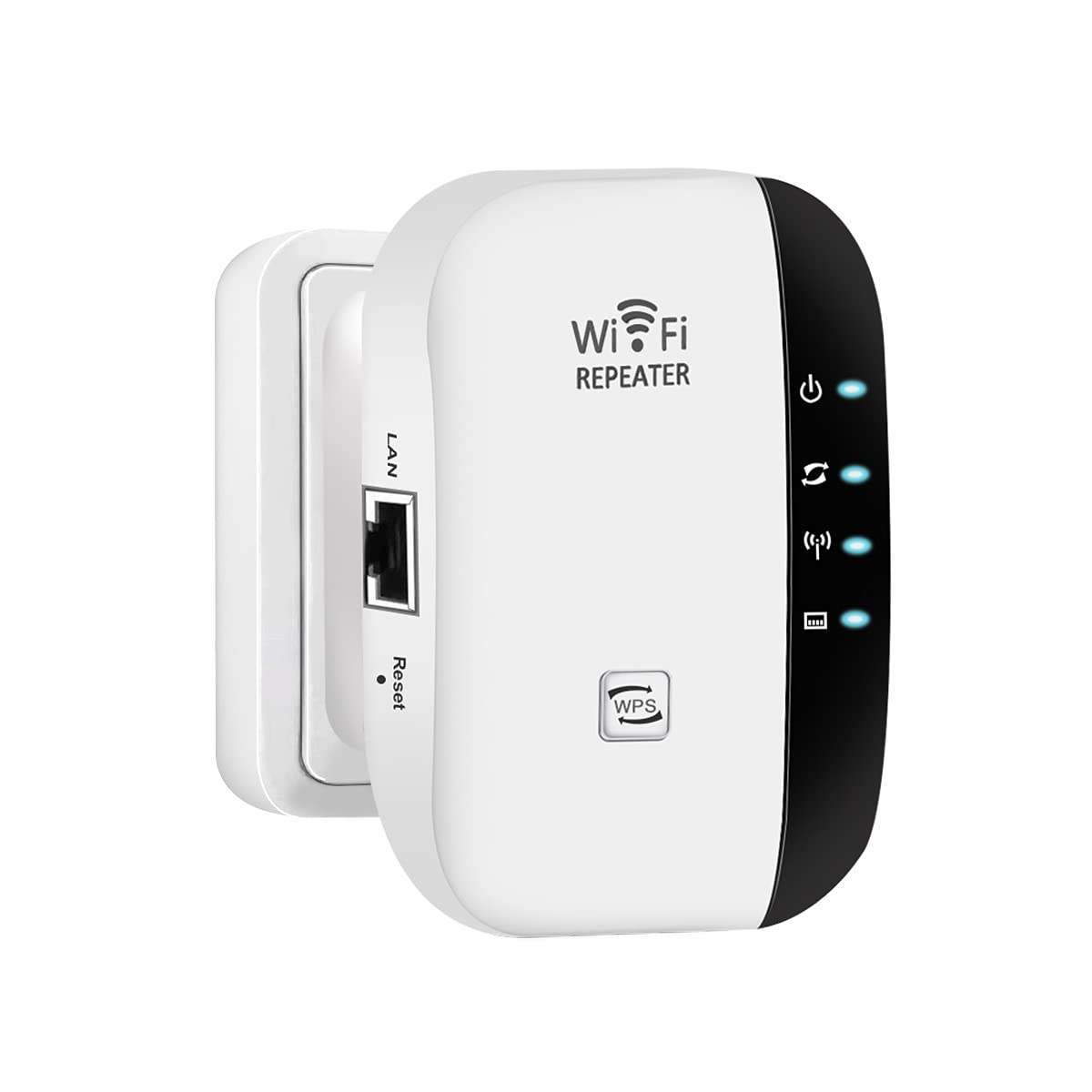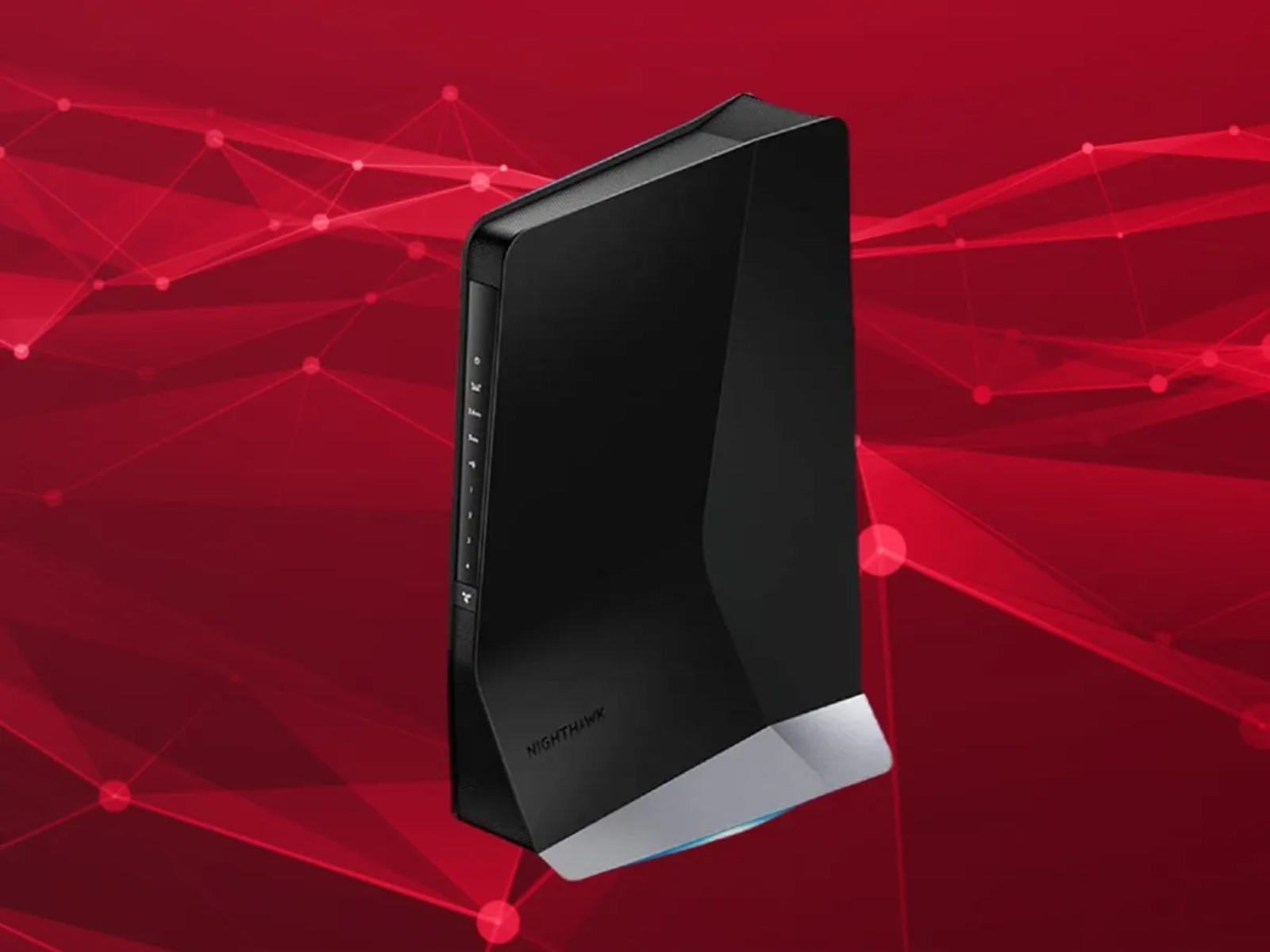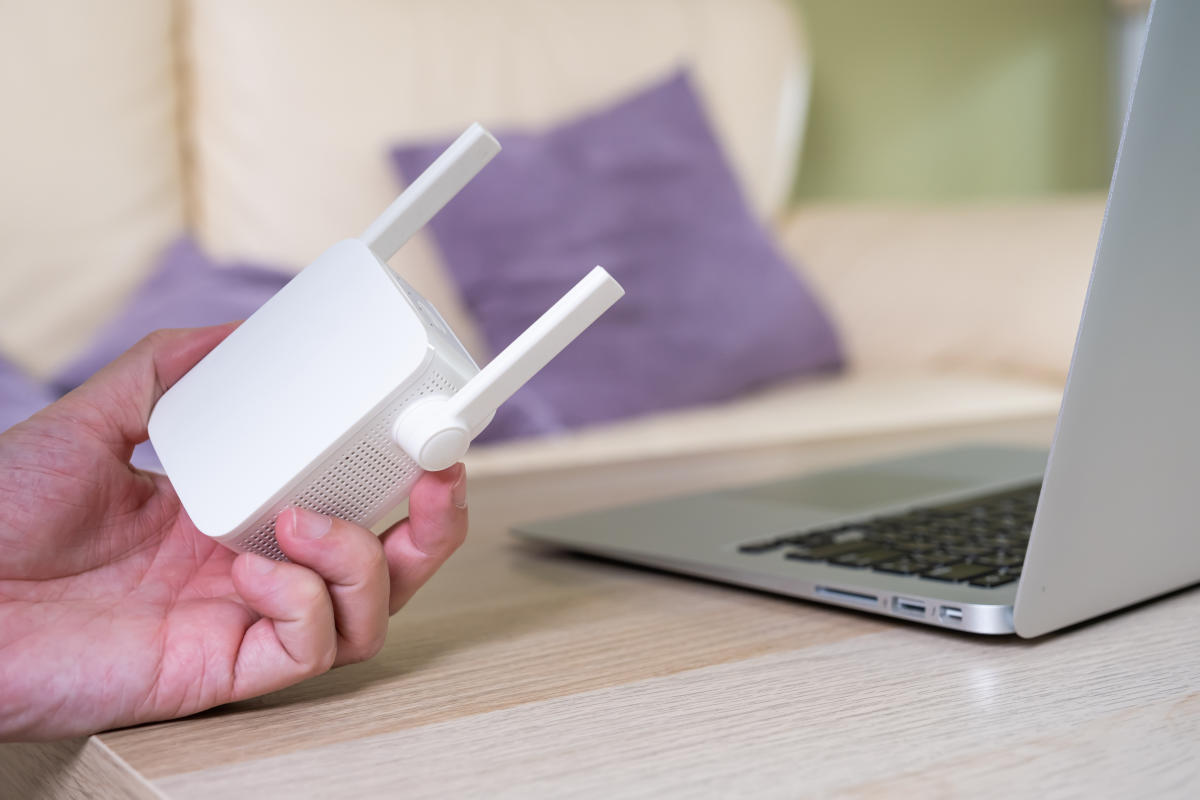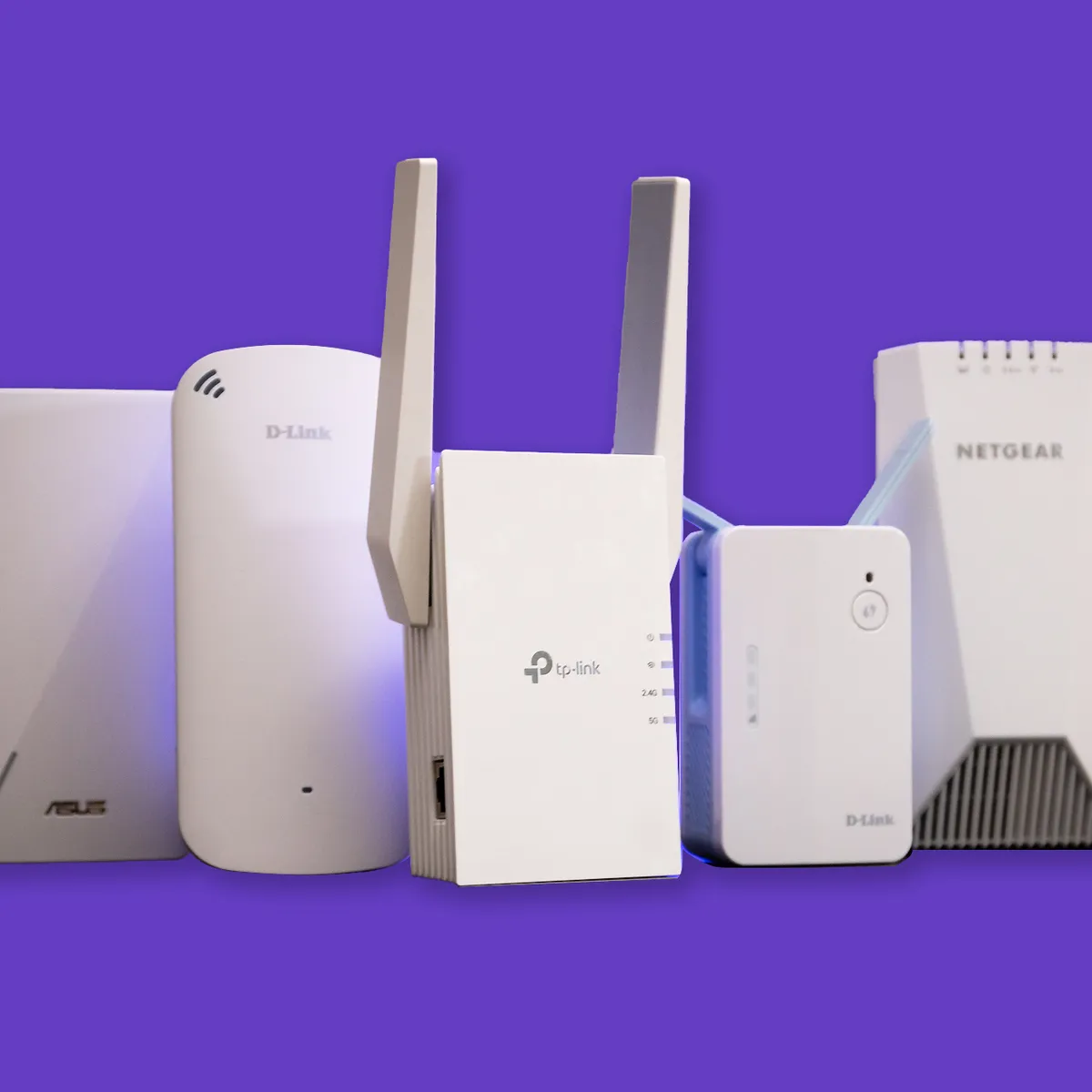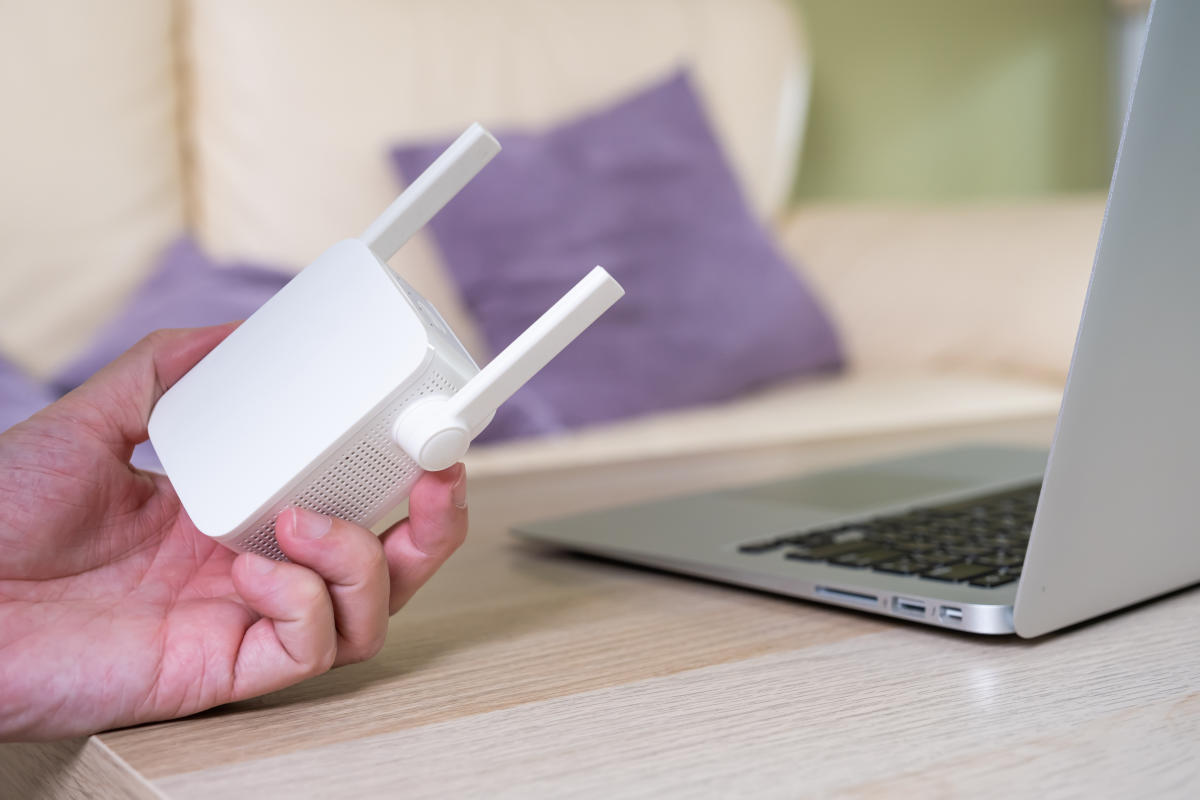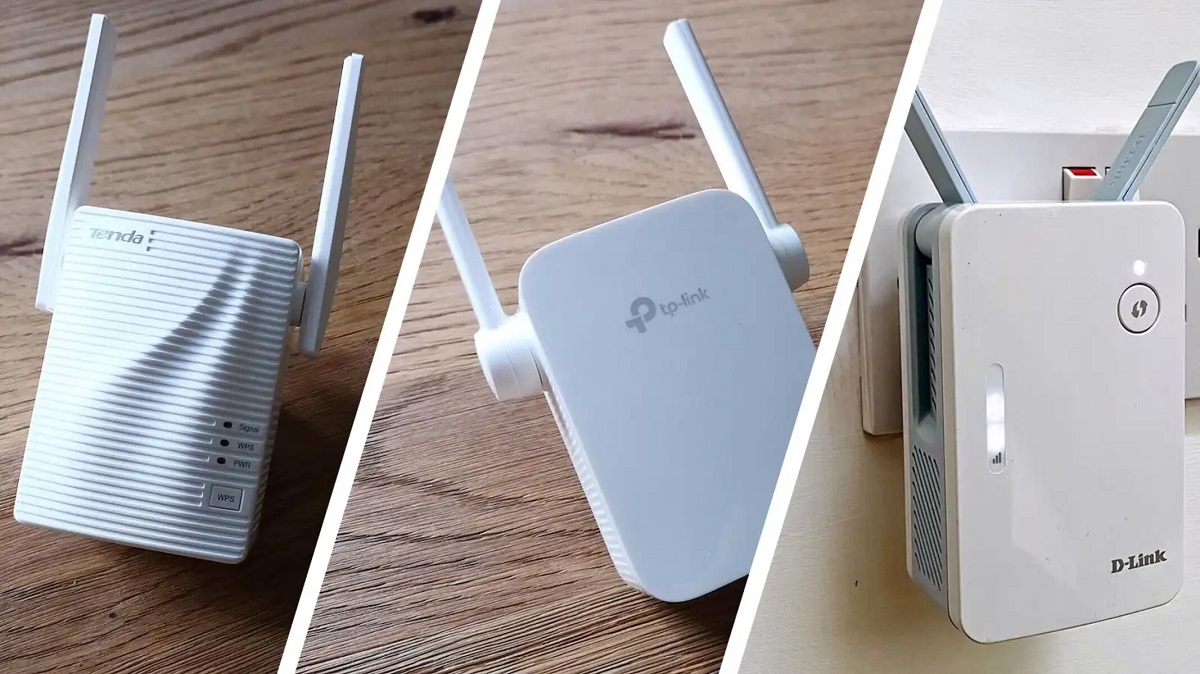Introduction
Welcome to the world of Wi-Fi extenders! In this fast-paced digital era, a stable and reliable internet connection is crucial for our day-to-day activities. However, it can be frustrating when certain areas of our homes or offices experience weak Wi-Fi signals. This is where a Wi-Fi extender comes to the rescue.
A Wi-Fi extender, also known as a wireless range extender or repeater, is a device that amplifies and extends the range of your existing Wi-Fi network. It acts as a bridge between your router and devices, eliminating dead zones and providing a stronger and more stable Wi-Fi signal throughout your space.
So, how does a Wi-Fi extender work? In this article, we will delve into the inner workings of these remarkable devices. We will explore the various types of Wi-Fi extenders available, discuss the process of setting them up, highlight their benefits, and provide essential tips for troubleshooting any issues that may arise.
Whether you struggle with Wi-Fi dead zones in your home, office, or any other location, a Wi-Fi extender can significantly improve your internet experience. By understanding how these devices function and learning the best practices for their installation and maintenance, you can optimize your Wi-Fi coverage and enjoy seamless connectivity throughout your space.
In the following sections, we will guide you through the technical aspects of Wi-Fi extenders in a user-friendly manner. So, keep reading to discover the wonders of Wi-Fi extenders and unlock the full potential of your wireless network!
What is a Wi-Fi Extender?
A Wi-Fi extender is a device designed to boost and expand the range of a wireless network. It is a cost-effective solution for overcoming Wi-Fi dead zones or areas where the signal strength is weak. By capturing the existing Wi-Fi signal from the router and amplifying it, a Wi-Fi extender extends the coverage area, allowing devices to connect to the network even at a distance from the router.
Typically, a Wi-Fi extender consists of two main components: a receiver and a transmitter. The receiver captures the Wi-Fi signal transmitted from the router, while the transmitter rebroadcasts the signal to provide extended coverage. This creates a bridge between the router and devices, ensuring a seamless and uninterrupted internet connection throughout your space.
Wi-Fi extenders are designed to work with any standard Wi-Fi router and are compatible with most devices that support wireless connectivity. They operate on the same Wi-Fi frequency band as the router, either 2.4 GHz or 5 GHz, and can support multiple devices simultaneously.
One important thing to note is that a Wi-Fi extender does not increase the speed of your internet connection. It simply amplifies the existing signal to reach areas that were previously out of range. Therefore, the speed and performance you experience with the extender will depend on the speed provided by your router.
Wi-Fi extenders can be a game-changer in buildings with multiple floors, large homes, or offices with thick walls that interfere with the Wi-Fi signal. Instead of investing in additional routers or running network cables, a Wi-Fi extender offers a flexible and cost-effective solution for extending your wireless network coverage.
In the following sections, we will explore how a Wi-Fi extender works, the different types available, and how to set them up for optimal performance. So, let’s dive in and unravel the mysteries of Wi-Fi extenders!
How does a Wi-Fi Extender Work?
To understand how a Wi-Fi extender works, let’s first delve into the concept of a wireless network. A typical wireless network consists of a router that acts as a central hub, transmitting the Wi-Fi signal to connected devices within its range. However, the reach of the router may be limited, resulting in weak or non-existent signals in certain areas of your space.
This is where a Wi-Fi extender comes into play. It acts as a bridge between the router and devices, capturing the existing Wi-Fi signal and amplifying it to extend the coverage area. The extender receives the Wi-Fi signal transmitted by the router and rebroadcasts it, effectively increasing the range and strength of the signal. This allows devices located far from the router to connect to the network and enjoy a stable internet connection.
To achieve this, a Wi-Fi extender uses two wireless radios: one for receiving and one for transmitting. The receiver radio picks up the Wi-Fi signal from the router, while the transmitter radio broadcasts the amplified signal to the devices. The extender is strategically placed in an area where the Wi-Fi signal from the router is still strong, ensuring a reliable connection.
It is important to note that the extender creates a separate network name (SSID) and password for the extended network. Devices connected to the extender will automatically switch between the extender’s network and the router’s network, depending on which one provides a stronger signal. This seamless transition ensures a smooth online experience without the need for manual adjustments.
Moreover, most Wi-Fi extenders feature technologies such as beamforming and dual-band support to optimize performance. Beamforming allows the extender to focus the Wi-Fi signal towards specific devices, enhancing signal strength and reducing interference. Dual-band support enables the extender to broadcast the Wi-Fi signal on both the 2.4 GHz and 5 GHz frequency bands, providing more options for devices to connect.
In summary, a Wi-Fi extender works by capturing the existing Wi-Fi signal, amplifying it, and rebroadcasting it to extend the coverage area. It acts as a bridge between the router and devices, eliminating dead zones and ensuring a strong and stable internet connection throughout your space. In the next section, we will explore the different types of Wi-Fi extenders available in the market.
Types of Wi-Fi Extenders
Wi-Fi extenders come in various types, each with its own features and capabilities. Understanding the different types can help you choose the one that best suits your needs. Let’s explore the most common types of Wi-Fi extenders available in the market today.
- Desktop Wi-Fi Extenders: These are standalone devices that are designed to be placed on a flat surface, such as a table or desk. They typically have multiple external antennas for better signal reception and transmission. Desktop extenders offer a good range and often come with additional features like Ethernet ports for wired connections.
- Wall-Plug Wi-Fi Extenders: Also known as plug-in extenders, these devices are compact and designed to be inserted directly into a power outlet. They are ideal for saving space and blend seamlessly into any room decor. Wall-plug extenders have built-in antennas and are easy to install, making them a popular choice for home users.
- Mesh Wi-Fi Systems: While not technically Wi-Fi extenders, mesh systems are worth mentioning due to their similar functionality. Mesh systems consist of multiple devices called nodes that work together to create a mesh network. Each node acts as a Wi-Fi extender, providing coverage to a specific area. These systems offer seamless roaming and can handle a large number of connected devices. Mesh systems are often preferred for comprehensive coverage in larger spaces.
- Outdoor Wi-Fi Extenders: As the name suggests, these extenders are designed for outdoor use. They are weatherproof and have a stronger wireless range to cover outdoor areas like gardens, patios, or larger commercial spaces. Outdoor extenders are built to withstand harsh weather conditions and provide reliable Wi-Fi connectivity in outdoor environments.
- Wi-Fi Range Extender Kits: These kits consist of multiple Wi-Fi extenders that can be strategically placed throughout your space to create a seamless extended network. Range extender kits are ideal for large homes, offices, or multi-story buildings where a single extender may not provide sufficient coverage. These kits come with multiple devices that work together to eliminate dead zones and ensure a strong signal throughout the entire area.
When choosing a Wi-Fi extender, consider factors such as the size of your space, the number of devices you will be connecting, and any specific needs or requirements you may have. Each type of extender offers its own advantages, so it’s important to select the one that best fits your particular situation.
Now that we have explored the different types of Wi-Fi extenders, let’s move on to the next section, where we will discuss how to set up a Wi-Fi extender for optimal performance.
Setting up a Wi-Fi Extender
Setting up a Wi-Fi extender may seem daunting, but with the right guidance, it can be a straightforward process. Here’s a step-by-step guide to help you set up your Wi-Fi extender for optimal performance:
- Choose the right location: Start by selecting an optimal location for your Wi-Fi extender. It should be placed within the range of your existing Wi-Fi signal but close enough to the areas where you need extended coverage. Avoid obstructions like walls or metal objects that can interfere with the signal.
- Connect to the extender: Plug in your Wi-Fi extender and power it on. Use your computer or mobile device to connect to the extender’s network. This can be done by searching for the extender’s network name (SSID) in the list of available networks and entering the corresponding password provided with the extender.
- Access the setup interface: Once connected to the extender’s network, open a web browser and enter the extender’s IP address or web URL as provided in the user manual. This will take you to the setup interface of the extender.
- Follow the setup wizard: The setup interface will guide you through the configuration process. Typically, you will need to select your existing Wi-Fi network from a list and enter the corresponding password. Some extenders may have additional settings, such as choosing a new network name (SSID) and password for the extended network.
- Adjust advanced settings (optional): If desired, you can explore the advanced settings in the setup interface. This includes options like channel selection, security settings, or adjusting the signal strength. However, it is recommended to keep the default settings unless you have specific requirements.
- Restart and test: Once the setup is complete, restart the Wi-Fi extender as instructed. After it reboots, test the extended network by connecting your devices to it and ensuring a stable internet connection. Walk around your space to ensure there are no dead zones and that the signal is strong across the desired areas.
It’s important to note that the setup process can vary slightly depending on the brand and model of your Wi-Fi extender. Always refer to the manufacturer’s user manual for detailed instructions specific to your extender.
By following these steps and optimizing the placement of your Wi-Fi extender, you can enjoy seamless and extended coverage throughout your space. In the next section, we will discuss the benefits of using a Wi-Fi extender.
Benefits of Using a Wi-Fi Extender
Wi-Fi extenders offer numerous benefits that enhance your internet experience and improve connectivity throughout your space. Here are some key advantages of using a Wi-Fi extender:
- Extended Wi-Fi coverage: The primary benefit of a Wi-Fi extender is that it extends the range of your wireless network. It eliminates Wi-Fi dead zones and reaches areas that were previously out of range, ensuring a strong and stable connection in every corner of your home or office.
- Improved Signal Strength: By amplifying the existing Wi-Fi signal, a Wi-Fi extender boosts the signal strength, resulting in faster and more reliable connections. This is especially useful in larger spaces or buildings with thick walls that can weaken the Wi-Fi signal.
- Seamless Roaming: Wi-Fi extenders usually create a seamless network by automatically switching devices between the extender and the router’s network, depending on which one offers a stronger signal. This allows for uninterrupted connectivity as you move around your space, without the need to manually switch networks.
- Cost-Effective Solution: Wi-Fi extenders provide an affordable alternative to adding additional routers or running network cables to extend your wireless network. They are a cost-effective solution for improving Wi-Fi coverage, especially in situations where installing new wiring is not feasible.
- Ease of Installation: Setting up a Wi-Fi extender is generally a simple and straightforward process. With user-friendly setup interfaces and step-by-step instructions, even non-technical users can easily install and configure the extender to get their extended network up and running in no time.
- Compatibility: Wi-Fi extenders are compatible with most Wi-Fi routers and devices, making it easy to integrate them into your existing network setup. Whether you have a single device or multiple devices connected, a Wi-Fi extender can support a wide range of devices, including smartphones, laptops, tablets, and smart home devices.
By utilizing the benefits of a Wi-Fi extender, you can enjoy seamless connectivity, eliminate dead zones, and enhance your online experience. Whether it’s for work, entertainment, or staying connected with family and friends, a Wi-Fi extender is an invaluable tool that ensures a strong and reliable Wi-Fi connection throughout your entire space.
Now that we have explored the advantages of using a Wi-Fi extender, let’s move on to the important factors to consider when choosing one.
Things to Consider when Choosing a Wi-Fi Extender
Selecting the right Wi-Fi extender is essential for optimal performance and a seamless internet experience. Here are some important factors to consider when choosing a Wi-Fi extender:
- Compatibility: Ensure that the Wi-Fi extender you choose is compatible with your existing router and devices. It should support the same Wi-Fi standards (such as 802.11ac or 802.11n) as your router to ensure a seamless connection.
- Range: Consider the range of the extender and its ability to cover the desired areas. The range can vary depending on the model and type of extender. Assess the size of your space and the number of obstacles (such as walls or floors) that may impact signal strength.
- Speed: While a Wi-Fi extender does not increase the speed of your internet connection, it should be capable of supporting the maximum speed provided by your router. Look for extenders with high data transfer rates and dual-band support for optimal performance.
- Antennas: Antennas play a crucial role in signal reception and transmission. Consider extenders with multiple external antennas for better range and signal strength. Adjustable antennas allow you to fine-tune the direction of the signal for improved coverage.
- Security Features: Ensure that the Wi-Fi extender offers robust security features. Look for features like WPA2 encryption, which provides a secure connection, protecting your data and preventing unauthorized access to your network.
- Set-up and User Interface: Consider the ease of setup and configuration. Look for user-friendly interfaces and clear instructions that simplify the installation process. Extenders with mobile apps or browser-based interfaces can offer more convenience for managing and monitoring your extended network.
- Brand Reputation and Reviews: Research the reputation of the brand and read customer reviews to gauge the reliability and performance of the Wi-Fi extender. Look for trusted brands known for producing quality networking equipment.
- Budget: Determine your budget and look for extenders that offer the best value for your money. While cost is an important factor, prioritize quality and performance to ensure a reliable and efficient Wi-Fi connection.
By considering these factors, you can make an informed decision and choose a Wi-Fi extender that meets your specific needs and provides the best coverage for your space.
Now that you are well-equipped with the information to choose the right Wi-Fi extender, let’s move on to the next section where we will explore troubleshooting tips to address any issues that may arise with your extender.
Troubleshooting Wi-Fi Extender Issues
While Wi-Fi extenders are designed to enhance your internet experience, occasional issues may arise. Here are some troubleshooting tips to help address common Wi-Fi extender problems:
- Placement: Ensure that the extender is placed in an optimal location, within range of your existing Wi-Fi signal. Avoid placing it near obstructions, such as walls or metal objects, which can interfere with the signal.
- Signal Interference: Check for any potential sources of signal interference, such as other electronic devices or neighboring networks on the same channel. Adjust the Wi-Fi channel on your extender or router to a less congested one to improve signal quality.
- Signal Strength: Use the signal strength indicator on your extender to determine if it is within the ideal range. If the signal is weak, try moving the extender to a different location or adjust the antennas for better signal reception.
- Reset the Extender: If you are experiencing persistent connectivity issues, try resetting the extender to its factory default settings. This can help resolve any configuration issues that may be causing the problem. Follow the instructions provided by the manufacturer to perform a reset.
- Network Name (SSID) Conflict: If you notice that your devices are connecting to the wrong network, with a weaker signal, ensure that the extender’s network name (SSID) is different from your router’s network name. Consider renaming the extender’s network to avoid confusion.
- Firmware Update: Check for firmware updates for your extender. Manufacturers often release firmware updates that can fix bugs, improve performance, and enhance compatibility with newer devices. Visit the manufacturer’s website or use the extender’s management interface to check for updates.
- Check Router Settings: Verify that your router’s settings are optimized for extender usage. Some routers may have specific settings that need to be adjusted for compatibility with extenders. Consult the router’s user manual or contact the manufacturer for guidance.
- Band Steering: If your extender supports dual-band networks, enable band steering, which automatically connects devices to the appropriate frequency (2.4 GHz or 5 GHz) based on their capabilities. This can help optimize performance and reduce interference.
- Factory Support: If you have exhausted all troubleshooting steps and are still experiencing issues, reach out to the manufacturer’s support team for assistance. They can provide specific guidance for your extender model and help resolve any complex issues.
These troubleshooting tips can help you resolve common Wi-Fi extender issues and ensure a stable and reliable internet connection throughout your space. Remember to consult the user manual or manufacturer’s website for further guidance on troubleshooting specific to your Wi-Fi extender model.
Now that we have covered troubleshooting tips, let’s wrap up the article by summarizing the key points discussed.
Conclusion
In conclusion, a Wi-Fi extender is an invaluable device that extends the range and improves the coverage of your wireless network. By amplifying the existing Wi-Fi signal, a Wi-Fi extender eliminates dead zones and ensures a strong and stable internet connection throughout your home or office.
We have explored how a Wi-Fi extender works by capturing and rebroadcasting the Wi-Fi signal, providing extended coverage and improved signal strength. We discussed the different types of Wi-Fi extenders, including desktop, wall-plug, mesh systems, outdoor extenders, and range extender kits. Each type offers unique features and benefits, allowing you to choose the one that best suits your needs.
Setting up a Wi-Fi extender is a straightforward process, involving choosing the right location, connecting to the extender’s network, and following the setup wizard. Taking into consideration factors such as compatibility, range, speed, and security features will help you make an informed decision when selecting a Wi-Fi extender.
We also discussed the various benefits of using a Wi-Fi extender, including extended Wi-Fi coverage, improved signal strength, seamless roaming, cost-effectiveness, ease of installation, and compatibility with multiple devices. Wi-Fi extenders enhance your online experience by providing a reliable and stable connection.
If you encounter any issues with your Wi-Fi extender, we provided troubleshooting tips such as optimizing placement, addressing signal interference, resetting the extender, checking network settings, and updating firmware. By following these steps, you can resolve common problems and ensure the optimal performance of your Wi-Fi extender.
In conclusion, a Wi-Fi extender is a powerful tool that extends the range and improves the coverage of your wireless network. Whether you need to eliminate Wi-Fi dead zones in your home or extend coverage in a large office building, a Wi-Fi extender can significantly enhance your internet experience. Evaluate your needs, choose the right extender, and enjoy seamless connectivity throughout your space.







